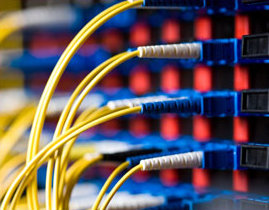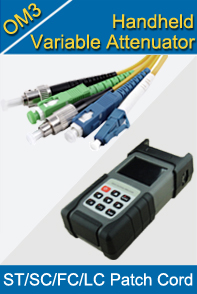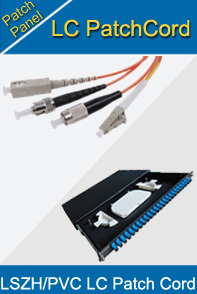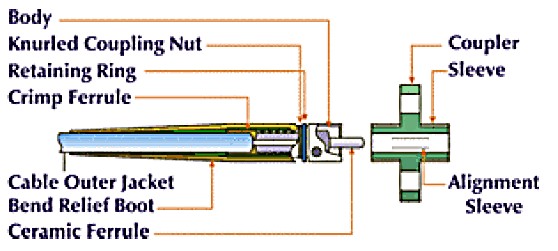-

- Sopto Home
-

- Special Topic
-

- Patch Cord Knowledge
-

- Review these reminders and warnings before you inspect and clean
Patch Cord Knowledge
- Fiber Optic Connector Ferrule Design
- Fiber Optic Connector Design
- E2000 to ST Fiber Patch Cable Overview
- Acceptable and Unacceptable Fiber Connector End-Face Finishes
- Using Wipes and Cleaning Cassettes to Clean Fiber Patch Cords
- Not-Too-Tight Mating of Fiber Optic Connectors
- Matching Gel and Oils Contamination about Fiber Optic Connectors
- The Effect of Improper Use of Fiber Optic Connectors
- Why Fiber Optic Connectors are Fragile?
SOPTO Special Topic
Certificate



Guarantee
Except products belongs to Bargain Shop section, all products are warranted by SOPTO only to purchasers for resale or for use in business or original equipment manufacturer, against defects in workmanship or materials under normal use (consumables, normal tear and wear excluded) for one year after date of purchase from SOPTO, unless otherwise stated...
Return Policies
Defective products will be accepted for exchange, at our discretion, within 14 days from receipt. Buyer might be requested to return the defective products to SOPTO for verification or authorized service location, as SOPTO designated, shipping costs prepaid. .....
Applications
 Fiber Patch Cords have a widely application. Where the need for the optical fiber connection, where you need fiber optic patch cords.
Fiber Patch Cords have a widely application. Where the need for the optical fiber connection, where you need fiber optic patch cords.
Testing Equipment
FTTX+ LAN
Optical Fiber CATV
Optical Communication System
Telecommunication
SOPTO Products
- Fiber Optic Transceiver Module
- High Speed Cable
- Fiber Optical Cable
- Fiber Optical Patch Cords
- Splitter CWDM DWDM
- PON Solution
- FTTH Box ODF Closure
- PCI-E Network Card
- Network Cables
- Fiber Optical Adapter
- Fiber Optical Attenuator
- Fiber Media Converter
- PDH Multiplexers
- Protocol Converter
- Digital Video Multiplexer
- Fiber Optical Tools
- Compatible
Related Products
Performance Feature
Good Water-proof
Low insertion loss;
low reflection loss;
Stability, good repeatability;
High-precision ceramic ferrule;
Compatible with NTT standard;
Precision Grinding and fully testing;
Compliance with international standards
Patch Cord Knowledge
Recommended


Review these reminders and warnings before you inspect and clean your fiber-optic connectors
Reminders
- Always turn off any laser sources before you inspect fiber connectors, optical components, or bulkheads.
- Always make sure that the cable is disconnected at both ends or that the card or pluggable receiver is removed from the chassis.
- Always wear the appropriate safety glasses when required in your area. Be sure that any laser safety glasses meet federal and state regulations and are matched to the lasers used within your environment.
- Always inspect the connectors or adapters before you clean.
- Always inspect and clean the connectors before you make a connection.
- Always use the connector housing to plug or unplug a fiber.
- Always keep a protective cap on unplugged fiber connectors.
- Always store unused protective caps in a resealable container in order to prevent the possibility of the transfer of dust to the fiber. Locate the containers near the connectors for easy access.
- Always discard used tissues and swabs properly.

Warnings
- Never use alcohol or wet cleaning without a way to ensure that it does not leave residue on the endface. It can cause damage to the equipment.
- Never look into a fiber while the system lasers are on.
- Never clean bulkheads or receptacle devices without a way to inspect them.
- Never touch products without being properly grounded.
- Never use unfiltered handheld magnifiers or focusing optics to inspect fiber connectors.
- Never connect a fiber to a fiberscope while the system lasers are on.
- Never touch the end face of the fiber connectors.
- Never twist or pull forcefully on the fiber cable.
- Never reuse any tissue, swab or cleaning cassette reel.
- Never touch the clean area of a tissue, swab, or cleaning fabric.
- Never touch any portion of a tissue or swab where alcohol was applied.
- Never touch the dispensing tip of an alcohol bottle.
- Never use alcohol around an open flame or spark; alcohol is very flammable.
Best Practices
- Resealable containers should be used to store all cleaning tool, and store endcaps in a separate container. The inside of these containers must be kept very clean and the lid should be kept tightly closed to avoid contamination of the contents during fiber connection.
- Never allow cleaning alcohol to evaporate slowly off the ferrule as it can leave residual material on the cladding and fiber core. This is extremely difficult to clean off without another wet cleaning and usually more difficult to remove than the original contaminant. Liquid alcohol can also remain in small crevices or cavities where it might re-emerge.



